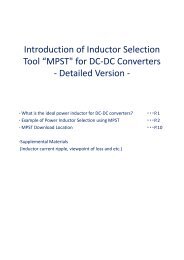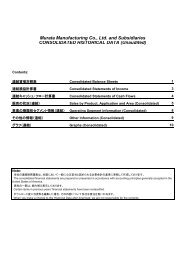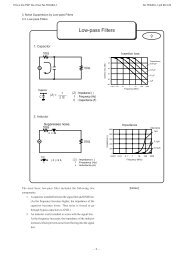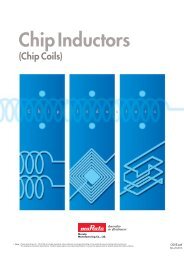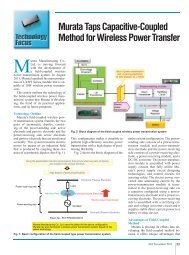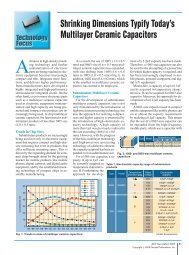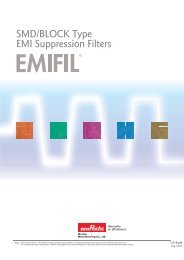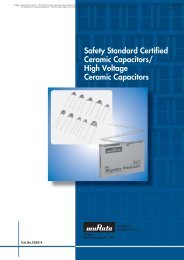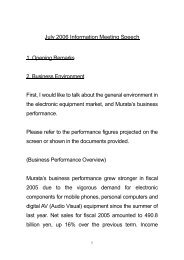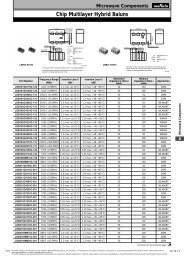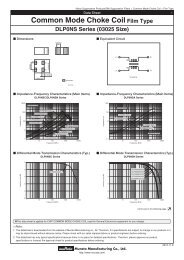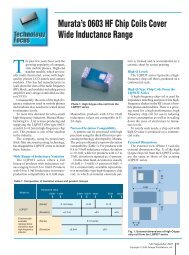Technical guide PDF - Murata
Technical guide PDF - Murata
Technical guide PDF - Murata
You also want an ePaper? Increase the reach of your titles
YUMPU automatically turns print PDFs into web optimized ePapers that Google loves.
2. Electrical characteristics of EDLC ~ How to select EDLC~2-1.Capacitance and ESR of EDLCBecause EDLC has high capacitance, it can be used as an energy supply device for back up or peakpower. Unlike a battery, the electric potential of EDLC becomes low by discharging EDLC. Therefore,energy stored in EDLC is shown by half of Q (charge) x V(voltage). However, EDLC consists ofcomplicated equivalent circuit as shown in figure 6. As such, actual measured capacitance value variesdepending on charge or discharge condition.<strong>Murata</strong>’s EDLC is a suitable product for using with relatively large current or high power, so wemeasure nominal capacitance at 100mA.Calculation of capacitanceTemperature: 25℃+/-5℃Discharge EDLC after charging by max voltagefor 30 minutes according to the profile and circuit(see figure 7).Charge/discharge current: 100mAV80%: 80% of Max voltageV40%: 40% of Max voltaget1: time to V80%t2: time to V40%Id: Discharge current (constant)Figure7ProfileCapacitance is calculated by the following formula (1).Nominal*capacitance(1):AC current meter:AC voltage meterC :Capacitor*Reference:V80%-V40% based on capacitance at 100mA dischargeCharge/discharge current 1A 100mA 10mA 1mA 0.1mACapacitance95% 100% 103% 107% 116%(Consider capacitance at100mA discharge as 100%)Measuring circuitNominal capacitanceCalculation of ESRESR is measured by AC method. It is calculated with the following formula (2) by measuringvoltage of both sides of the capacitor (Vc) applying 10mATemperature: 25℃+/-5℃Frequency: 1 kHzAC current (Ic): 10mACapacitor voltage: Vc(2):AC current meter:AC voltage meter:OscillatorC :Capacitor4




